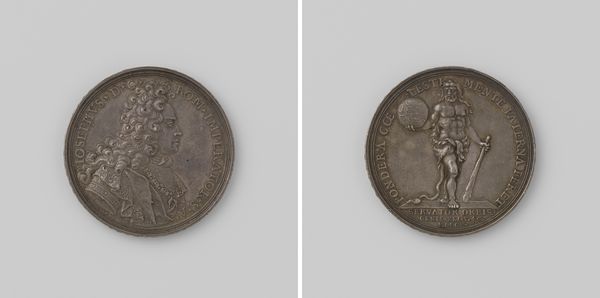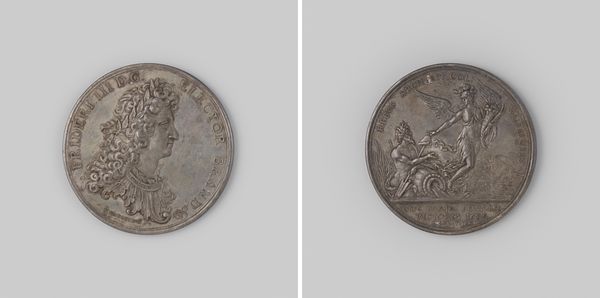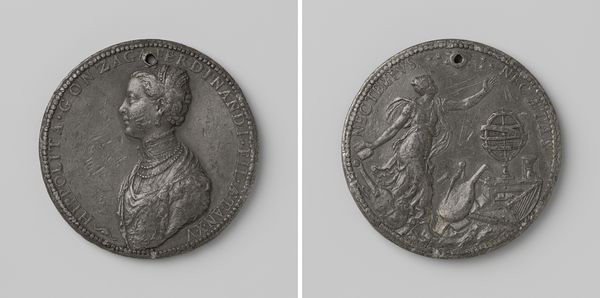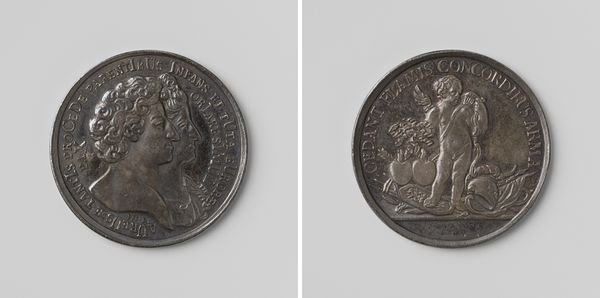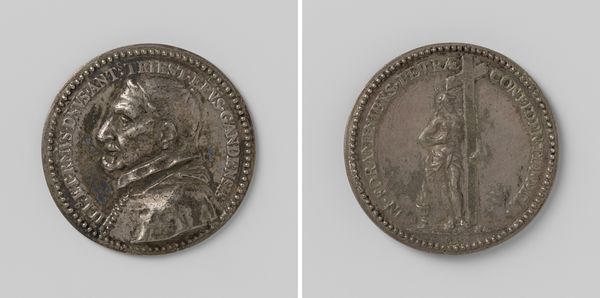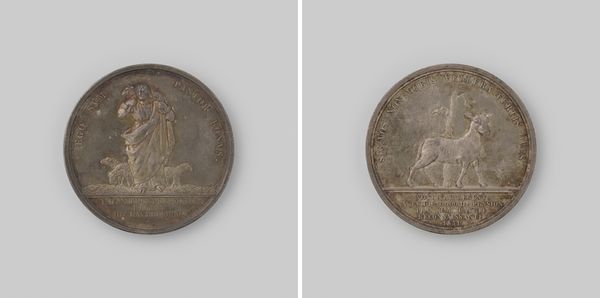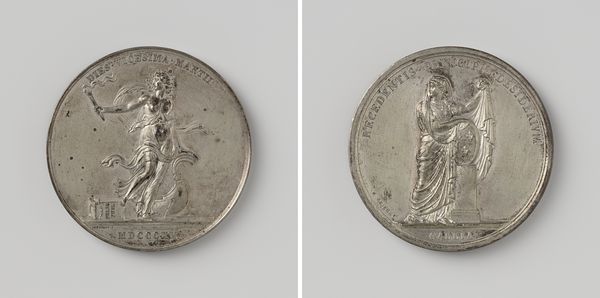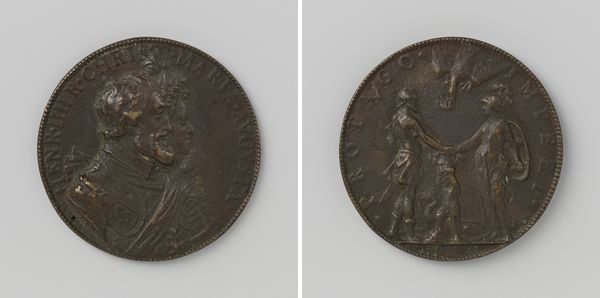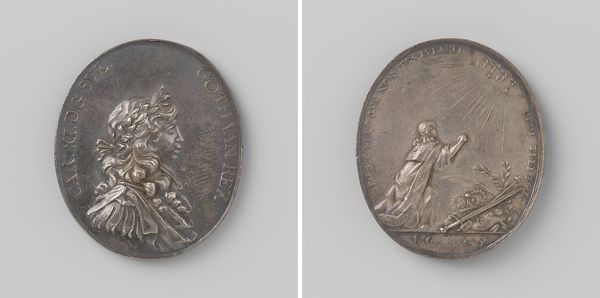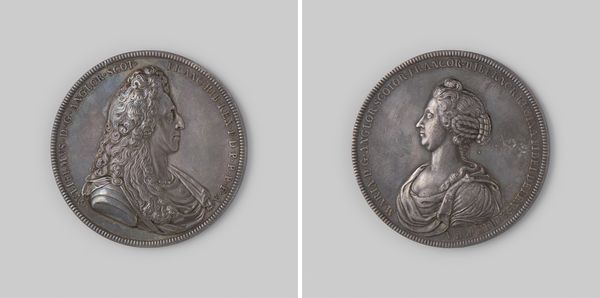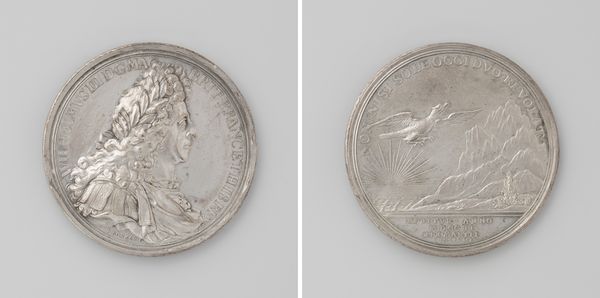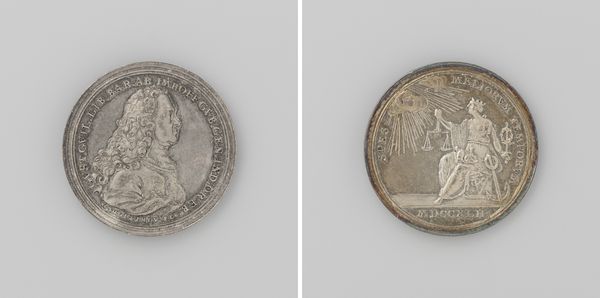
metal, relief, bronze, sculpture
#
portrait
#
medal
#
decorative element
#
neoclassicism
#
metal
#
relief
#
bronze
#
sculpture
#
ceramic
#
history-painting
#
decorative art
Dimensions: diameter 5.9 cm, weight 88.82 gr
Copyright: Rijks Museum: Open Domain
Editor: Here we have Johann Lorenz Natter’s 1751 bronze medal, "Overlijden van Willem IV," or "The Death of Willem IV." It's fascinating to see such a somber moment captured on what's essentially a coin. What can you tell me about the historical context of this piece? Curator: Well, the death of Willem IV was a significant event in Dutch history, marking a shift in political power. Commemorative medals like this served as important tools for shaping public memory and constructing narratives around leadership. Note how the medal likely functioned within a specific political landscape, intending to reinforce specific views and allegiances to the Oranje lineage. Editor: I see… So the choice of imagery – the portrait, the allegorical figure on the reverse – would be carefully considered for its impact? Curator: Precisely! Consider the stylistic choices. It aligns with Neoclassicism, but does it embrace the aesthetics fully, or does it serve a particular political message? The controlled style, and classical allusions serve to reinforce concepts of stability and legitimacy amidst transition, which speaks volumes. What impression do you get from that allegorical female figure with a lion at her feet? Editor: It gives me the impression of the Dutch Republic in mourning, a bit of a national symbol there with the lion. Curator: Indeed. The circulation of such medals shaped public perception in a powerful way. Understanding the function of this type of portrait, or symbol in political discourse helps decode the imagery. Did the medal succeed in conveying its intended message, or was there dissent regarding this representation? Editor: That makes me wonder how such official art was received by different social classes at the time. Food for thought. Curator: Exactly! It reminds us to look at art beyond its aesthetic value and consider the social and political forces that shaped its creation and reception. Editor: I'll definitely keep that in mind moving forward.
Comments
No comments
Be the first to comment and join the conversation on the ultimate creative platform.
